Market
Movement, Nexus Labs, and More This Week


Crypto airdrops farmers have ten valuable opportunities to receive free cryptocurrency tokens from projects backed by renowned investors.
These airdrops distribute free tokens to attract new users and expand communities. For crypto enthusiasts, the following airdrops present a chance to earn new tokens and engage with emerging projects.
Movement Network
Movement secured $41.40 million in a funding round co-led by Polychain Capital, Borderless Capital, Blizzard Fund, and dao5, with additional participation from Binance Labs.
While the MOVE network currently has no active tasks, users can claim their MoveDrop by connecting their EVM wallet used during registration. This initiative highlights the growing trend of incentivized participation in decentralized ecosystems.
“Someone farmed 36 wallets for Movement & got 90,000+. MOVE airdrop currently worth around $66,000,” said Tobi, an airdrop farmer.
MOVE airdrop was launched earlier today, on December 9, on Binance’s airdrop portal. The token also secured listings on South Korean exchanges Upbit and Bithumb.
Nexus Labs
Nexus Labs aims to create a “Verifiable Internet” by leveraging the computing power of connected devices. After raising $27.20 million in a funding round co-led by Pantera Capital, DragonFly Capital, and Lightspeed Ventures, the network launched its testnet on December 9, lasting only four days.
Participants simply need to keep a browser tab open to share their internet speed, making it an accessible yet time-sensitive opportunity.
Vana
Vana raised $25 million in a round co-led by Coinbase Ventures, Polychain Capital, and Paradigm. Users can participate in its confirmed airdrop by running a node on a test network. With system requirements of 1 CPU, 8GB RAM, and 10GB of storage, Vana is targeting tech-savvy participants.
The project also announced the closure of its Telegram app on December 9, urging users to connect their wallets to preserve earned points.
“On Monday, December 9, at 9:00 am Pacific, we’ll be launching a new Nexus network testnet. The goal is to enable the Verifiable Internet. Watch our latest video to learn more about what we are building,” Vana said.
SynFutures
SynFutures, a decentralized exchange (DEX) for derivatives, completed a $36 million funding round co-led by Polychain Capital, Pantera Capital, and HashKey Capital.
The launch of its governance token, F, on December 6 marked a significant milestone, offering fee discounts, rewards, and governance rights to holders. BeInCrypto also reported plans to list the token on Bybit and Gate.io.
“The SynFutures Foundation will oversee growth, manage proposals, and collaborate with partners,” the team stated in a recent announcement.
Wormhole
Wormhole, a cross-chain bridge protocol, secured $225 million in funding with participation from Coinbase Ventures and Multicoin Capital. The project’s confirmed airdrop reflects its commitment to decentralization and community engagement. Meanwhile, token holders are rewarded for staking their W holdings.
“A minimum of 50,000,000 W is allocated for Reward Period 1 of the Wormhole Staking Rewards Program (SRP), currently active for all W holders on Solana, Arbitrum, Base, Optimism, and Ethereum,” Wormhole said.
XION
XION raised $36 million in a fundraiser supported by HashKey Capital, The Spartan Group, and Multicoin Capital. The project’s airdrop targets early adopters and contributors who played a vital role in its community development. Through this initiative, XION emphasizes rewarding loyalty and ecosystem engagement.
“You may be deemed a believer for the XION airdrop if you: Played a key role in the XION community’s growth, believing in the project from the beginning. Believed in and actively engaged with apps on the XION testnet. Earned special recognition from official XION community activities. Believed in something, across a wide variety of ecosystem partners,” one community member shared.
Taiko
Taiko, a Layer 2 scaling solution for Ethereum, raised $37 million in a funding round co-led by Hashed Fund, Lightspeed Ventures, and Hongshan. With its airdrop confirmed on December 5, Taiko aims to enhance decentralization by distributing tokens to early users and contributors.
“Taiko, a Layer 2 scaling solution on Ethereum, is giving out free tokens through their airdrop,” an official medium post read.
The Taiko airdrop rewards early users, developers, and community members. By joining, you can get free tokens and be part of Taiko’s future. With the Taiko airdrop, the project shares its tokens with the community.
Magic Eden
Magic Eden, a leading NFT platform, raised $159.50 million in a round led by Paradigm, with Coinbase Ventures and Sequoia Capital participating. The ME token, central to its ecosystem, is set for its airdrop on December 10. Pre-market trading suggests a value of $3-$4 per token, making it a potentially lucrative opportunity for participants.
“The ME token is currently trading in pre-markets at $3-4 USD per ME. Pre-markets should always be treated with caution, but give an initial indication of where the value might be heading,” said Azuki researcher wale.moca.
Jupiter
Jupiter announced a confirmed $860 million airdrop following a $137.50 million fundraiser. Known as “Jupuary,” this initiative will reward protocol users while filtering out opportunistic participants. Eligibility checks begin this month, with the airdrop scheduled for January.
“Jupuary is on. Jupiter DAO Passes Massive $860M ‘Jupuary’ Airdrop Vote. A snapshot of eligibility was taken in November. A link to check eligibility will be available later in the month, while the actual airdrop is scheduled for the following month,” said Marty Party, a popular user on X.
StarkNet
StarkNet, a Layer 2 solution on Ethereum, raised $282.50 million in a funding round co-led by Pantera Capital, Paradigm, and Sequoia Capital. While the project has not confirmed an airdrop date, ecosystem updates and integrations suggest exciting developments on the horizon.
“More integrations, better accessibility, and an ecosystem that never stops shipping… Another great week on Starknet, packed with tons of updates (and a new airdrop to claim,” said Brother Staknet Digger.
Overall, these crypto airdrops reflect significant developments within the blockchain space fueled by capital injections and community-driven incentives. From confirmed airdrops to novel testnets, these projects highlight the potential for a decentralized future of finance, computing, and internet connectivity.
As these projects progress, early adopters have the opportunity to shape and benefit from this growing ecosystem actively.
Disclaimer
In adherence to the Trust Project guidelines, BeInCrypto is committed to unbiased, transparent reporting. This news article aims to provide accurate, timely information. However, readers are advised to verify facts independently and consult with a professional before making any decisions based on this content. Please note that our Terms and Conditions, Privacy Policy, and Disclaimers have been updated.
Market
XRP Futures Traders Increase Bets on Upside

Over the past week, XRP’s price has remained range-bound amid the broader market’s recovery attempt.
However, with a growing bullish bias toward the altcoin, XRP may be on the brink of breaking free from this range and trending upward. This analysis explains why.
XRP Futures Traders Bet on Upside as Long Positions
The momentum shift towards the bulls has become evident, particularly within the futures market, where long bets on XRP are now surpassing short positions. This is reflected by the token’s XRP’s long/short ratio, which is currently at 1.07.

The long/short ratio measures the proportion of long positions (bets on price increases) to short positions (bets on price declines) in the market.
When its value is below one, it indicates that the number of short positions outweighs long positions in the market, suggesting bearish sentiment or a lack of confidence in the token’s future price performance.
As with XRP, when an asset’s long/short ratio is above one, it means there are more long positions than short ones. It indicates that traders are predominantly bullish on XRP and hints at a higher likelihood of an upward breach of its narrow range.
In addition, XRP’s relative strength index (RSI) has climbed steadily, indicating a gradual rise in demand for the token. The key momentum indicator, at 50.77, currently rests above the neutral line and is in an uptrend.
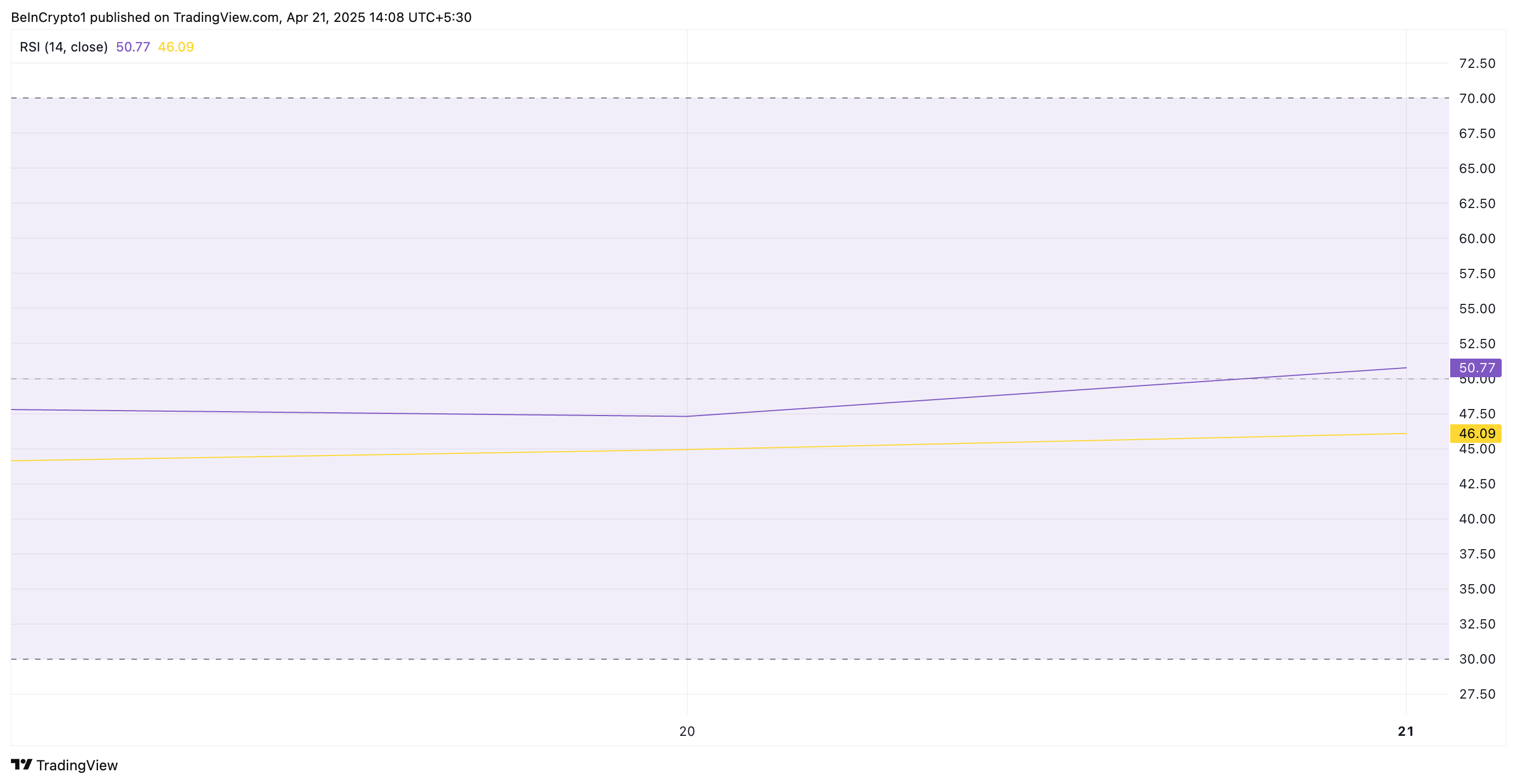
The RSI indicator measures an asset’s overbought and oversold market conditions. It ranges between 0 and 100. Values above 70 suggest that the asset is overbought and due for a price decline, while values under 30 indicate that the asset is oversold and may witness a rebound.
At 50.77, XRP’s RSI signals a shift toward bullish momentum. It indicates that buying pressure is starting to outweigh selling pressure, and the asset may be poised for further price increases.
XRP Eyes $2.18 Resistance as Bulls Look to Push for $2.29
XRP currently trades at $2.13, just 3% away from its next significant resistance level, $2.18. If buying pressure intensifies and the altcoin successfully flips this price point into a support floor, it could trigger further price growth. In this scenario, XRP could potentially climb to $2.29.
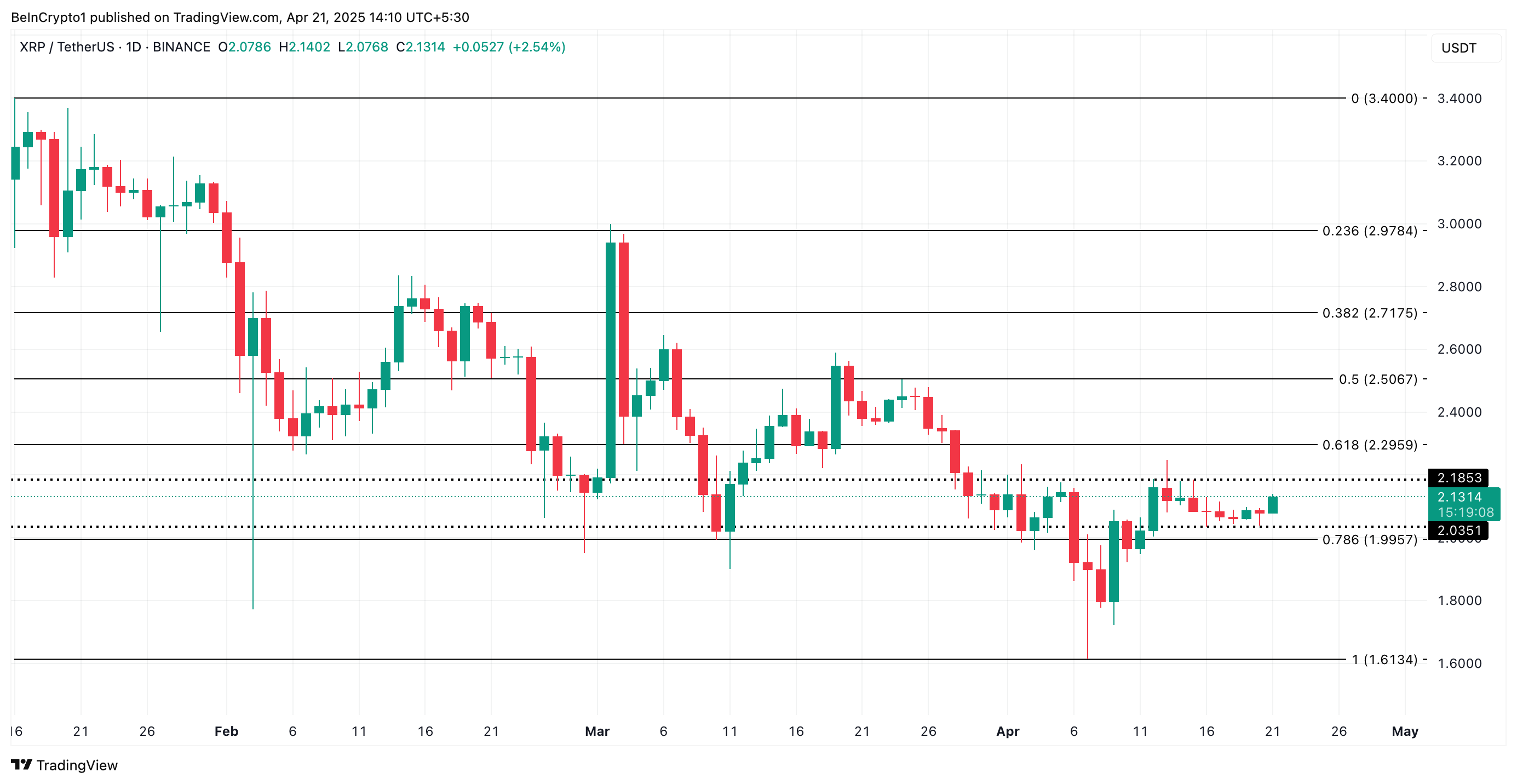
However, if demand weakens and the bears regain control, XRP may remain range-bound. It could even break below the $2.03 support and fall to $1.99.
Disclaimer
In line with the Trust Project guidelines, this price analysis article is for informational purposes only and should not be considered financial or investment advice. BeInCrypto is committed to accurate, unbiased reporting, but market conditions are subject to change without notice. Always conduct your own research and consult with a professional before making any financial decisions. Please note that our Terms and Conditions, Privacy Policy, and Disclaimers have been updated.
Market
Optimism, Aztec, and Huma Finance


The crypto market is attempting a recovery, with Bitcoin (BTC) nearing the $90,000 milestone. Amidst improving sentiment, several startups are launching enticing airdrops, providing crypto enthusiasts with opportunities to engage with budding platforms without initial financial input.
This week, we discuss airdrop participation opportunities from three projects with financial backing from renowned investors.
Optimism
Layer-2 blockchain Optimism is one of the top three crypto airdrops this week. The Optimism crypto airdrop comes after the network raised $267.50 million from key investors such as Andreessen Horowitz, Coinbase Ventures, Paradigm, and IDEO CoLab Ventures, among others.
The airdrop concerns a SuperStacks Campaign, which opened on April 16 and will remain until June 30.
“With many chains building as one, a new network structure is emerging to solve fragmentation in Ethereum. This network is modular, interoperable, and composable by default. We call it the Superchain: and it changes everything,” Optimism explained.
Rewards are in the form of points, awarded for interacting with the projects. Airdrop farmers also get rewarded for providing liquidity to superchains, scalable blockchains combined into a single ecosystem to solve Ethereum fragmentation.
Actual tasks bring 10 EXP (experience points) per $1 of daily liquidity. In the past, Optimism held five airdrops, giving away over 265 million tokens.
“You may be eligible for the 6th airdrop without realizing it. In the system, we collect badges as you perform operations on Optimism. However, since it counts your previous operations when you log in, you may have opened many badges.,” one airdrop farmer explained.
This means even minimal effort could yield rewards. However, participating in the Optimism airdrop does not guarantee future rewards. Instead, it only provides an opportunity to earn points.
Aztec
Another top crypto airdrop to watch this week is Aztec, bringing forth a privacy-focused Layer-2 zero-knowledge (ZK) rollup on Ethereum.
Aztec is backed by $119.1 million in funding from investors such as Andreessen Horowitz (a16z), Paradigm, Consensys, and Coinbase Ventures.
The project has garnered significant attention, following talks of a native AZTEC token and a confirmed retroactive airdrop for early users.
On April 17, the network announced the Aztec Sequencer Form, front-running a public testnet. Interested participants were asked to fill out the form to gain early access to the testnet.
Historically, blockchain projects reward testnet participants with tokens. Based on this, Aztec’s funding and investor backing increase the probability of an airdrop.
Huma Finance
This week, the watchlist also includes Huma Finance, the first PayFi (Payment Finance) network built on Solana. The project focuses on transforming global payment settlements using blockchain technology.
Huma Finance launched the second version of point farming, which is available only on the Solana network. Participants can deposit USDC tokens and earn Feathers (points). Notably, no KYC is needed in this version, and more pools are available.
Recently, the project announced social and deposit quests on Galxe, allowing users to complete these quests and try to win a share of $2,000. Notably, participants should have at least lvl 2 of Web3 Passport.
“Huma 2.0 is The Next Wave! Now anyone can earn real yield and stack rewards, exclusively on Solana. New quest is LIVE on Galxe Quest. Join the PayFi movement for a chance to grab a share of $2000 USDC,” the network shared.
The project also launched a point farming program, in which participants can deposit USDC tokens into one of the pools. For this activity, users must pass KYC.
Meanwhile, Huma Finance boasts up to $46.3 million in funds raised from backers such as HashKey Capital, Circle, ParaFi Capital, and Distributed Global.
Disclaimer
In adherence to the Trust Project guidelines, BeInCrypto is committed to unbiased, transparent reporting. This news article aims to provide accurate, timely information. However, readers are advised to verify facts independently and consult with a professional before making any decisions based on this content. Please note that our Terms and Conditions, Privacy Policy, and Disclaimers have been updated.
Market
Solana Staking Cap Surpasses Ethereum, But Is This Sustainable?
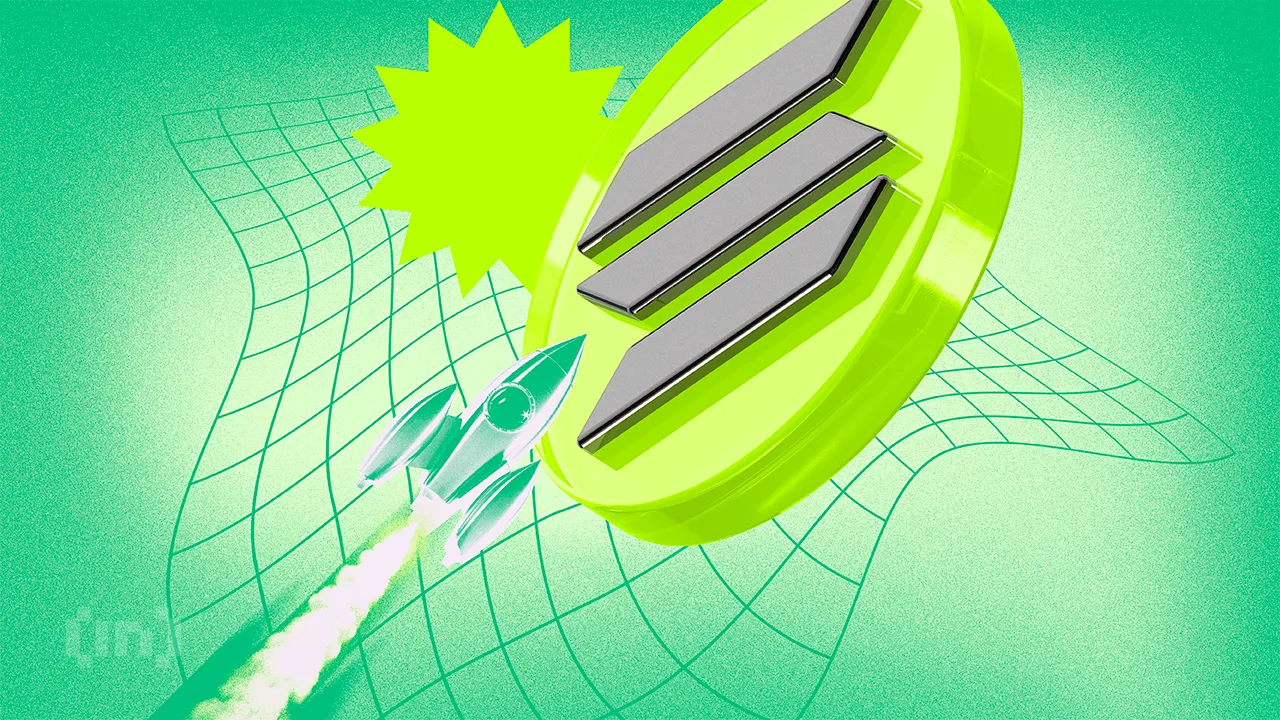
According to data from StakingRewards, Solana (SOL) has overtaken Ethereum (ETH) in staking market capitalization, reaching $53.15 billion compared to Ethereum’s $53.72 billion.
This milestone has sparked heated discussions across the social media platform X, raising the question: Is this a turning point for Solana, or merely a short-lived surge?
Solana Outpaces Ethereum As High Staking Yields Prove Appealing
Recent data reveals that 64.86% of Solana‘s total supply is currently staked, delivering an impressive annual percentage yield (APY) of 8.31%. In contrast, Ethereum has only 28.18% of its supply staked, with an APY of 2.98%.
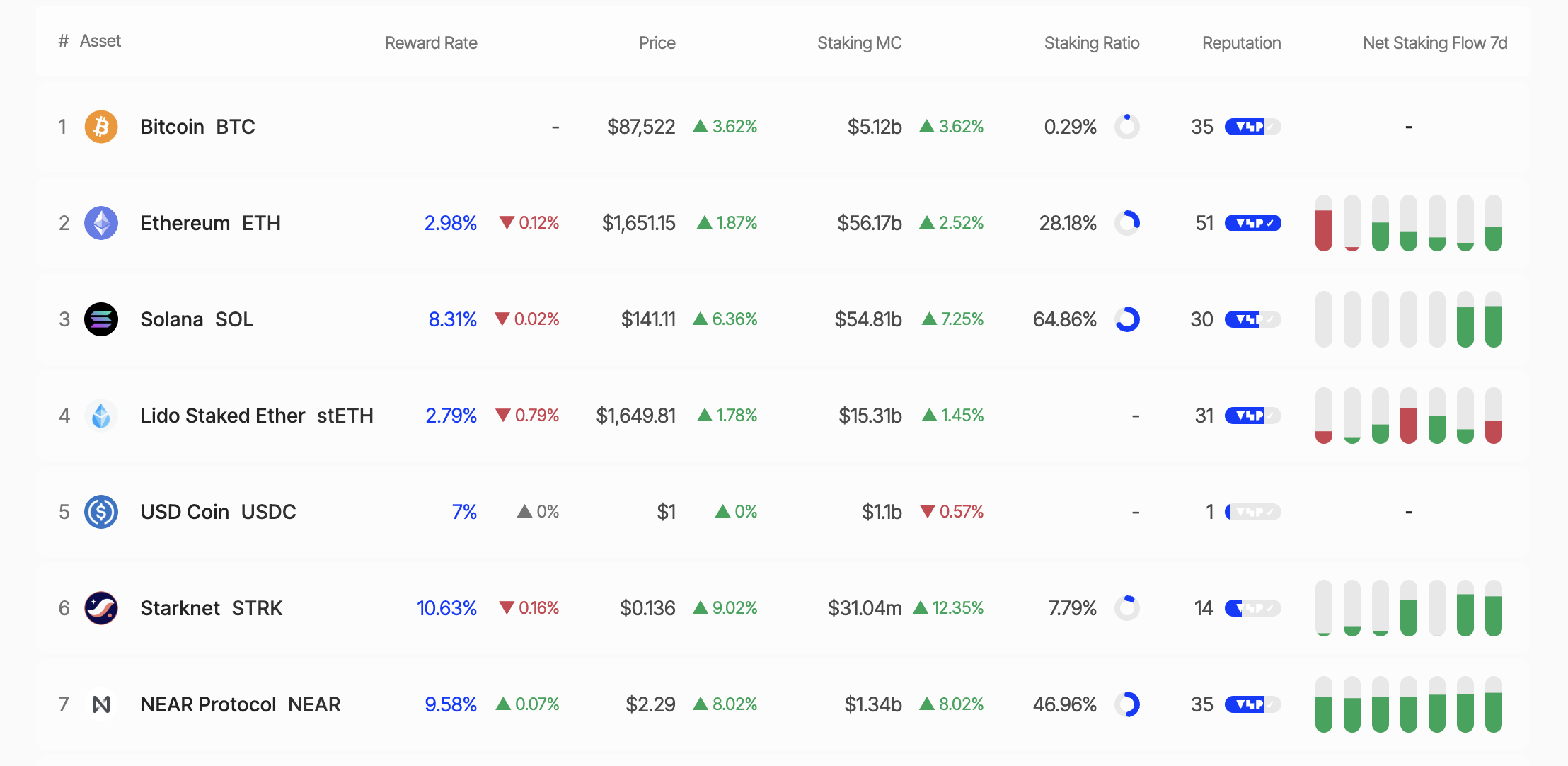
This disparity highlights Solana’s growing appeal for investors seeking passive income through staking. Staking market capitalization is calculated by multiplying the total number of staked tokens by their current price. With SOL priced at $138.91 as of this writing, Solana has officially surpassed Ethereum in this metric.
However, Solana’s high staking ratio has sparked some controversy. Critics, such as Dankrad Feist on X, argue that Solana’s lack of a slashing mechanism (or penalties for validator violations) undermines the economic security of its staking model. With its slashing mechanism, Ethereum offers greater security, despite its lower staking ratio.
“It’s very ironic to call it ‘staking’ when there is no slashing. What’s at stake? Solana has close to zero economic security at the moment,” Dankrad Feist shared.
Increased Whale Activity Signals Caution
Meanwhile, recent moves by “whales” (large investors) have further fueled interest in Solana. On April 20, 2025, a whale unstaked 37,803 SOL (worth $5.26 million). Similarly, Galaxy Digital withdrew 606,000 SOL from exchanges over four days (April 15–19, 2025), concluding with 462,000 SOL.
Additionally, on April 17, 2025, a newly created wallet withdrew approximately $5.15 million worth of SOL from the Binance exchange. In the same tone, Binance whales withdrew over 370,000 SOL tokens valued at $52.78 million.
While some whales withdrew their SOL holdings, other large holders accumulated. Janover, a US-listed company, increased its Solana holdings to 163,651.7 SOL (worth $21.2 million) and partnered with Kraken exchange for staking on April 16, 2025.
These actions signal diverging plays from institutional investors and whales, as the Solana price fluctuates around key levels.
SOL Price Analysis: Opportunities and Challenges
As of this writing, SOL was trading at $140.49, up 3.53% in the past 24 hours. Analysts highlight $129 as crucial support for the Solana price, with $144 presenting the key roadblock to overcome before Solana’s upside potential can be realized. Breaking above the aforementioned roadblock could propel SOL toward new highs.
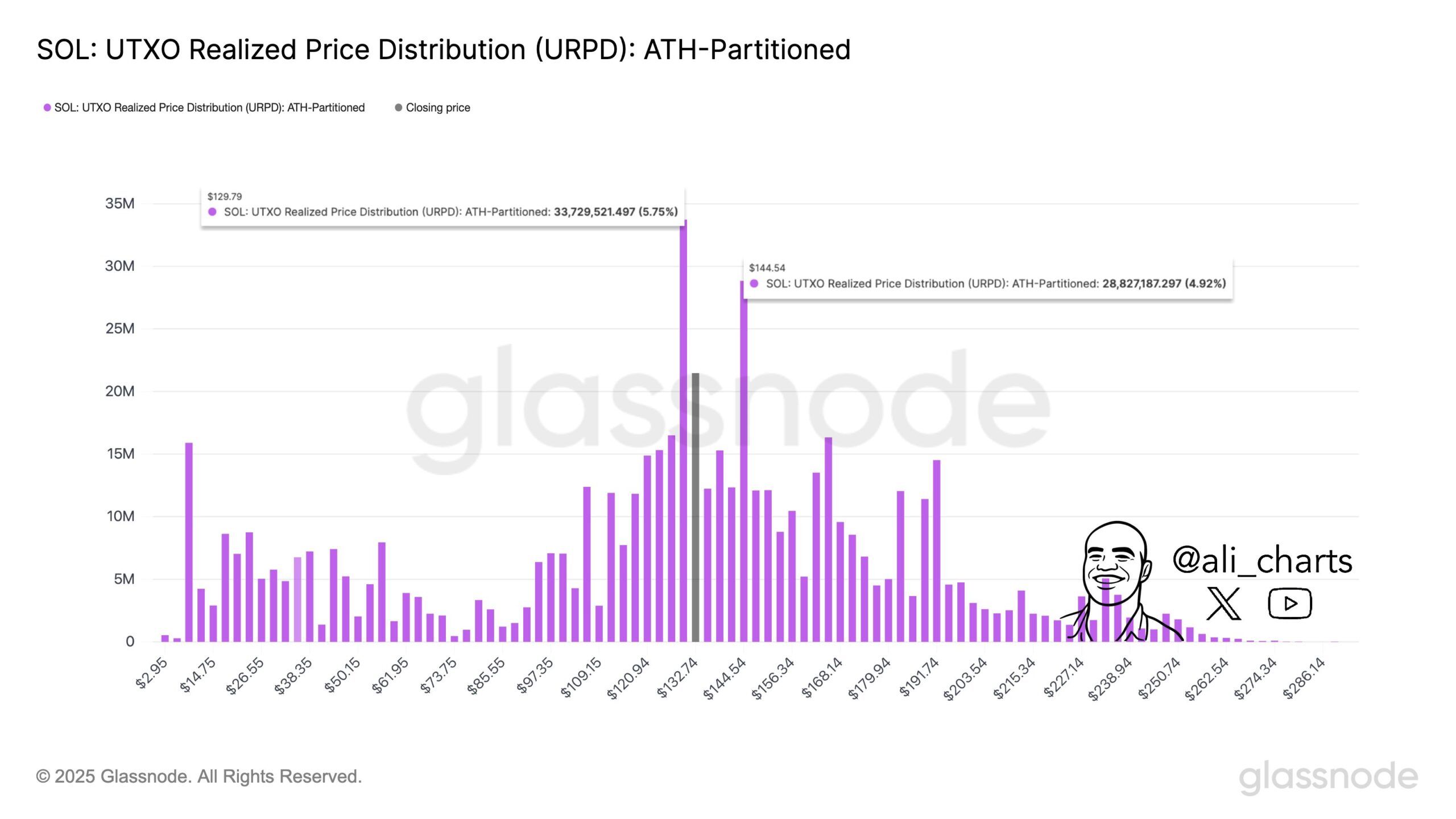
Conversely, dropping below the $129 support level could trigger increased selling pressure. Nevertheless, SOL has shown a remarkable recovery, with a 14.34% increase over the past week.
Another factor to consider is the ongoing development of the Solana ecosystem. Key innovations include the QUIC data transfer protocol, the combination of Proof-of-History (PoH) and Proof-of-Stake (PoS), and the diversification of validator clients.
With these, Solana continues to enhance its performance and decentralization. Additionally, the launch of the Solang compiler, compatible with Ethereum’s Solidity, has attracted developers from the Ethereum ecosystem.
BeInCrypto also reported on Solana’s upcoming community conference, otherwise termed Solana Breakpoint. Key announcements from this event could provide further tailwinds for the SOL price.
Nevertheless, despite surpassing Ethereum in staking market capitalization, Solana faces significant challenges. Ethereum benefits from a more mature DeFi ecosystem, greater institutional trust, and enhanced security through its slashing mechanism.
To some, Ethereum’s lower staking ratio (28%) may be a deliberate strategy to reduce network pressure and ensure liquidity for DeFi applications.
In contrast, Solana’s high staking ratio (65%) could limit liquidity within its DeFi ecosystem. This raises the question of whether Solana can strike a balance between staking and the growth of its decentralized applications.
As Solana continues challenging Ethereum’s dominance, the crypto community remains divided. Is Solana’s rise a sustainable breakthrough, or just another wave of hype?
Disclaimer
In adherence to the Trust Project guidelines, BeInCrypto is committed to unbiased, transparent reporting. This news article aims to provide accurate, timely information. However, readers are advised to verify facts independently and consult with a professional before making any decisions based on this content. Please note that our Terms and Conditions, Privacy Policy, and Disclaimers have been updated.
-

 Market21 hours ago
Market21 hours ago1 Year After Bitcoin Halving: What’s Different This Time?
-

 Market22 hours ago
Market22 hours agoVOXEL Climbs 200% After Suspected Bitget Bot Glitch
-

 Market20 hours ago
Market20 hours agoTokens Big Players Are Buying
-

 Market19 hours ago
Market19 hours agoDogecoin Defies Bullish Bets During Dogeday Celebration
-

 Market23 hours ago
Market23 hours agoHow Token Launch Frenzy Is Delaying 2025 Altcoin Season
-
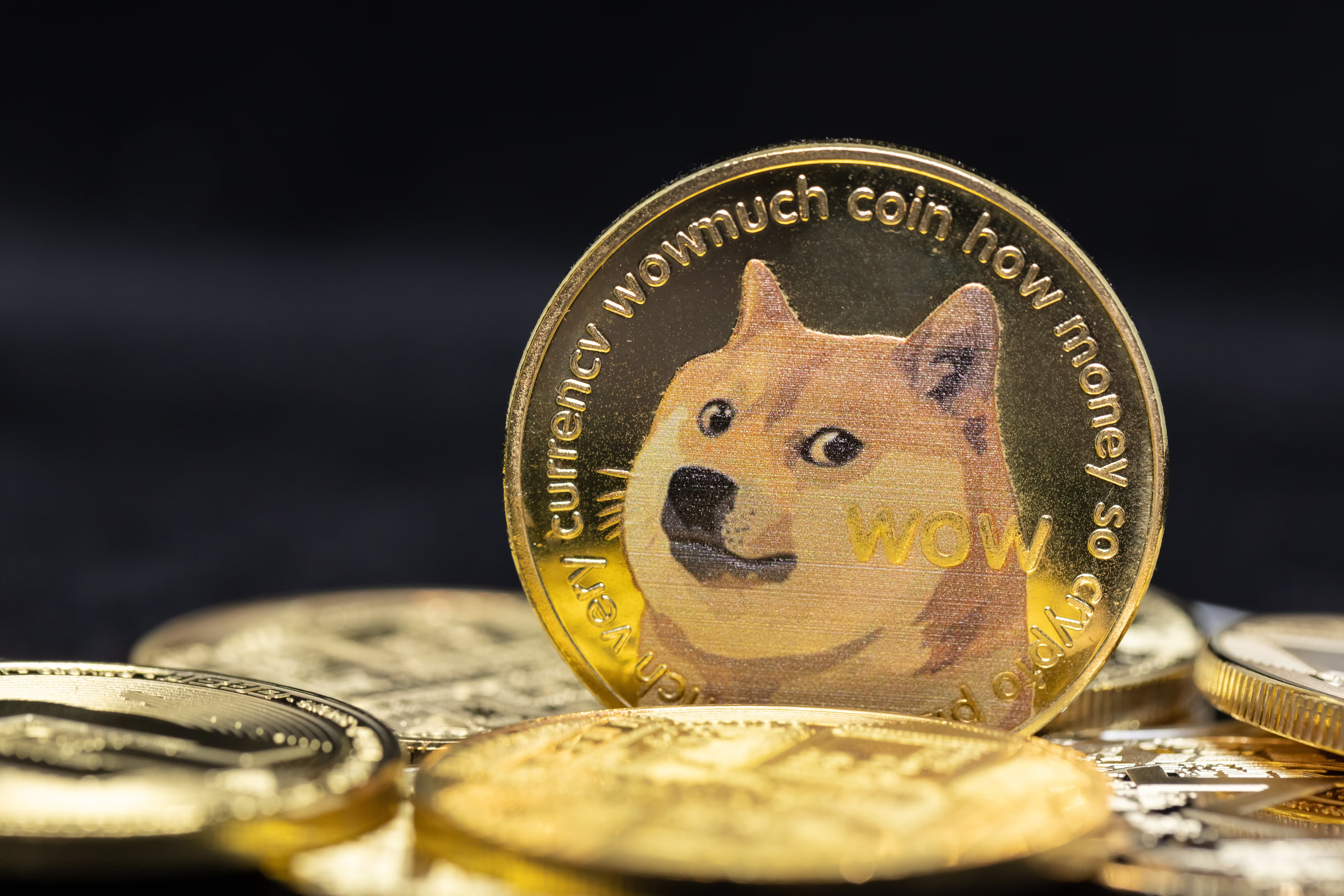
 Altcoin23 hours ago
Altcoin23 hours agoBinance Traders Go Big On Dogecoin—Majority Holding Long Positions
-

 Market17 hours ago
Market17 hours agoWill XRP Break Support and Drop Below $2?
-

 Bitcoin17 hours ago
Bitcoin17 hours agoBitcoin LTH Selling Pressure Hits Yearly Low — Bull Market Ready For Take Off?

























